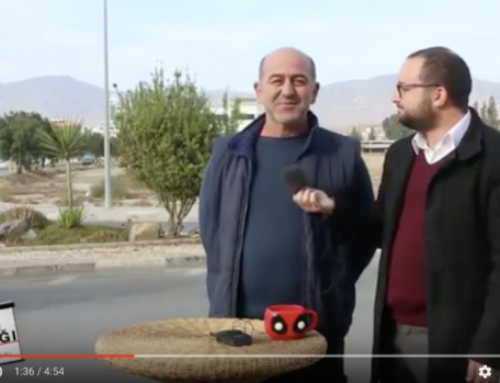The anthropology of time has achieved at least three things. Empirically, it explored the many ways humans relate to time and all things temporal. Theoretically, it embedded the analyses of these empirical findings into broader theoretical frameworks (for example, of power and agency) and developed its own temporal metaphysics. Conceptually, it expanded and polished its analytical toolbox. As part of this third strategy, anthropologists have uncovered and refined the temporal logics of a variety of concepts. Here I expand this conceptual work, focusing on sustainability as a particular orientation to the future.
I propose four analytical points, based on long-term fieldwork in the postindustrial German harbor city of Bremerhaven. Each point responds to concrete questions voiced by my informants, who work with – and towards – the concept of sustainability in their professional and private lives. For many postindustrial cities worldwide, sustainability is the guiding principle for urban regeneration, preparing the groundwork for a different future in the present. It has supplanted growth as the previous era’s guiding principle for urban development, in the hope that this can bulletproof cities from crises yet-to-come. However, the work of urban sustainability as a “teleology of the everyday” is often more complex and difficult than expected. This epochal Time of Sustainability began in Bremerhaven approximately fifteen years ago, and what follows are some of the questions my informants have struggled with in the meantime.
First, when do we know that a city has become sustainable? Many of the city officials in charge of Bremerhaven’s transformation are trained in biology and ecology. Through their training, they envision the city becoming a kind of self-sustaining ecosystem. For them, the aim is that Bremerhaven exists – and is predicted to continue to exist – safely as a stable demographic and sociospatial entity. It should do so without extra efforts to secure its future survival and wellbeing. The city’s future should not be in any doubt. In this sense, sustainability is defined by the absence of crisis and the flourishing of future prospects. However, this definition falls short in helping to determine when the city has become sustainable, rather than only momentarily “not unsustainable.” Before the last local elections in 2015, for instance, the recent stabilization of the city’s demographic and socioeconomic prospects led to an unexpected shift away from the notion of sustainability: the lord mayor and the governing social democratic party promptly returned to predictions of future growth despite the many forecasts that Bremerhaven would remain Germany’s poorest city. Although sustainability had driven public discourses for years, many people realized that neither officials nor citizens had ever spelled out in detail what sustainability would actually look like when it was achieved. Instead of a detailed description of the future as an actual telos, sustainability was only yet another (although dominant) future orientation that proved to be more fragile than expected.

Invitation to the launch of the Climate City program.
Second, how can we make sustainability sustainable? Many of my informants noticed that the changes they implemented to establish sustainability would depend on further, continuous investment and maintenance. For example, in 2005 and 2009, two new museums opened in the city center with the aim of boosting tourism as a sustainable economy. A few years later, both were struggling with falling visitor numbers. Similarly, the Climate City office was founded to facilitate and administer Bremerhaven’s transformation into an ecologically sustainable city. After the aforementioned elections, the new coalition seriously considered closing the office, and eventually left it open but moved it out of the city center. These examples show the enduring efforts necessary to uphold the specific orientation to the future that sustainability-as-telos facilitates. Concepts like sustainability might invoke change and propel new ideas and practices, but their ability to have effects depends on their own endurance.

Bremerhaven’s new city center [Convention Center, Climate Center, Shopping Mall].

Fishery harbor, Bremerhaven, featuring the largest wind turbine in the world.
Finally, what of the future of sustainable futures? As a last temporal operation, sustainability invited my informants to cultivate yet another relationship to the future: it demanded they consider the maintenance of the future in the future. Sustainability was never used simply as an aspiration for change. Rather, in its own logic it already forced its practitioners to consider the endurance and upkeep of the aspired changes. It asks them to factor in the maintenance of the future of the future. That is why, as a future orientation, it is essential to the contemporary, postindustrial, era and the thought that is required for solving humanity’s manifold problems.
These four conceptual and practical problems articulated by my interlocutors from Bremerhaven flag the potential of sustainability, and its drawbacks: as a powerful – and empowering – concept and anthropological tool, it still needs more detail, upkeep, force and farsightedness in its use and implementation. Nonetheless, as a forerunner of an ecological episteme, it orients human ideas and actions to the future in different, provocative and stimulating ways, and pushes the boundaries of temporal thought by, for example, already considering the maintenance of the future in the future. When the future survival of humanity in the Anthropocene is at stake, this is how far our temporal thought will have to reach.
Cite as: Ringel, Felix. 2019. “Sustainability as Orientation: Towards Sustainable Urban Futures.” In “Orientations to the Future,” Rebecca Bryant and Daniel M. Knight, eds., American Ethnologist website, March 8. http://americanethnologist.org/features/collections/orientations-to-the-future/sustainability-as-orientation-towards-sustainable-urban-futures.
Felix Ringel is a Marie Skłodowska-Curie International Research Fellow in the Anthropology Department at Durham University, UK. His work on time, the future, and urban regeneration has been published in leading anthropological journals such as The Journal of the Royal Anthropological Institute, Critique of Anthropology and Anthropological Theory. He is the author of Back to the Postindustrial Future: An ethnography of Germany’s fastest-shrinking city and the coeditor of The Cambridge Journal of Anthropology’s special issue on “Time-Tricking: Reconsidering Temporal Agency in Troubled Times.”




